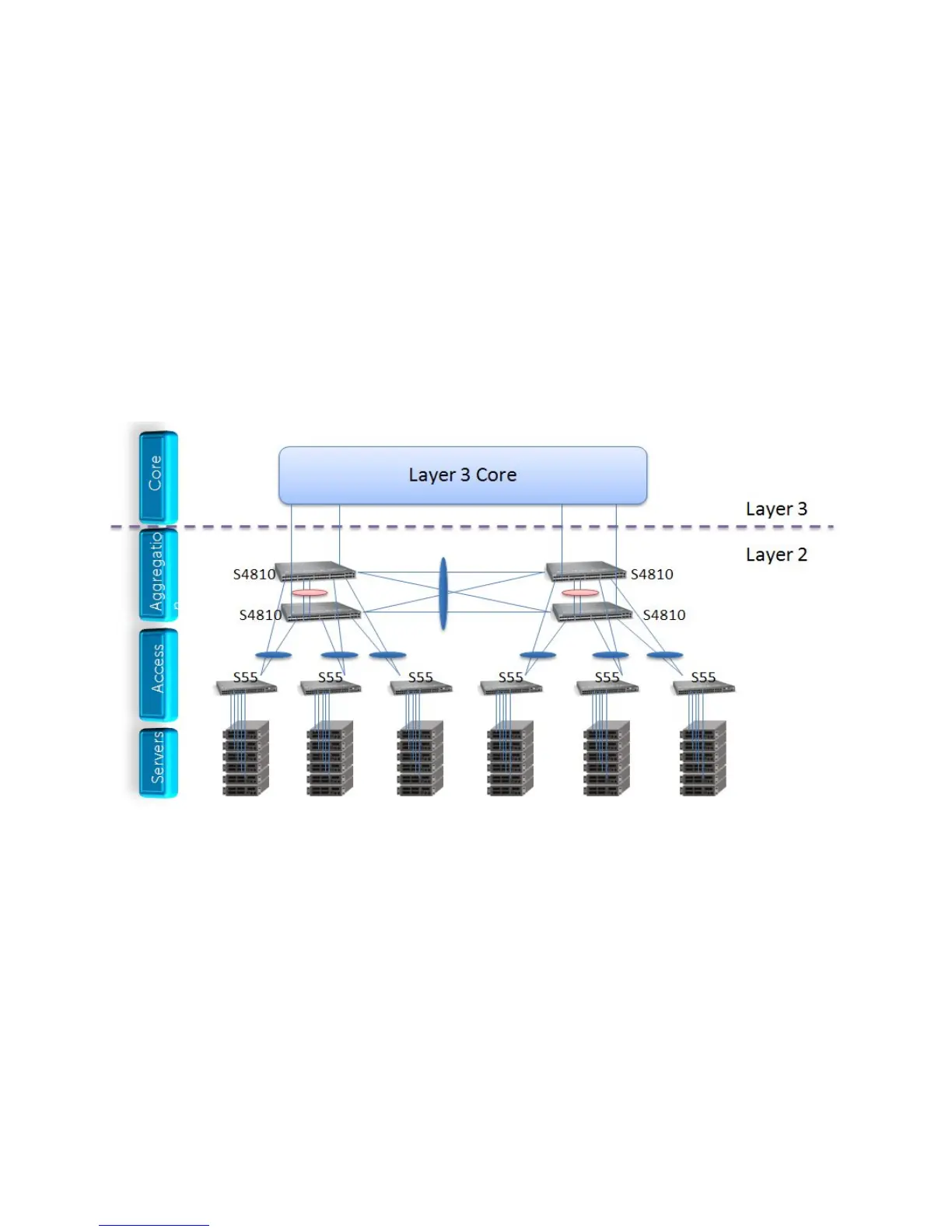Virtual Link Trunking (VLT) | 1065
Enhanced VLT
An enhanced VLT (eVLT) configuration creates a port channel between two VLT domains by allowing
two different VLT domains, using different VLT Domain ID numbers, connected by a standard LACP
LAG to form a loop-free Layer 2 topology in the aggregation layer. This configuration supports a
maximum of four (4) nodes per eVLT domain, increasing the number of available ports and allowing for
dual redundancy of the VLT.
Additionally, a VLT domain that is a member of one eVLT can be used in another eVLT configuration
with a different VLT domain. Routing protocols such as OSPF are not compatible with eVLT; however,
VLT domains can be used for routing. A separate Layer 3 router is not required for inter-VLAN
communication.
The following figure shows how the core/aggregation port density in the Layer 2 topology is increased
using eVLT. For inter-VLAN routing and other Layer 3 routing, a separate Layer 3 router is required.
VLT Concepts Terminology
The following are some key VLT terms.
Virtual link trunk (VLT) - The combined port channel between an attached device and the VLT peer
switches.
VLT backup link - The backup link monitors the vitality of a VLT peer switch. The backup link sends
configurable, periodic keep alive messages between VLT peer switches.
VLT interconnect (VLTi) - The link used to synchronize states between the VLT peer switches. Both
ends must be on 10Gor 40G interfaces.

